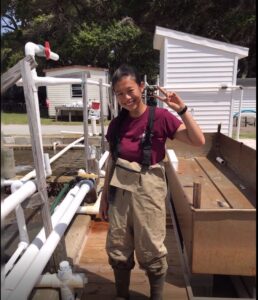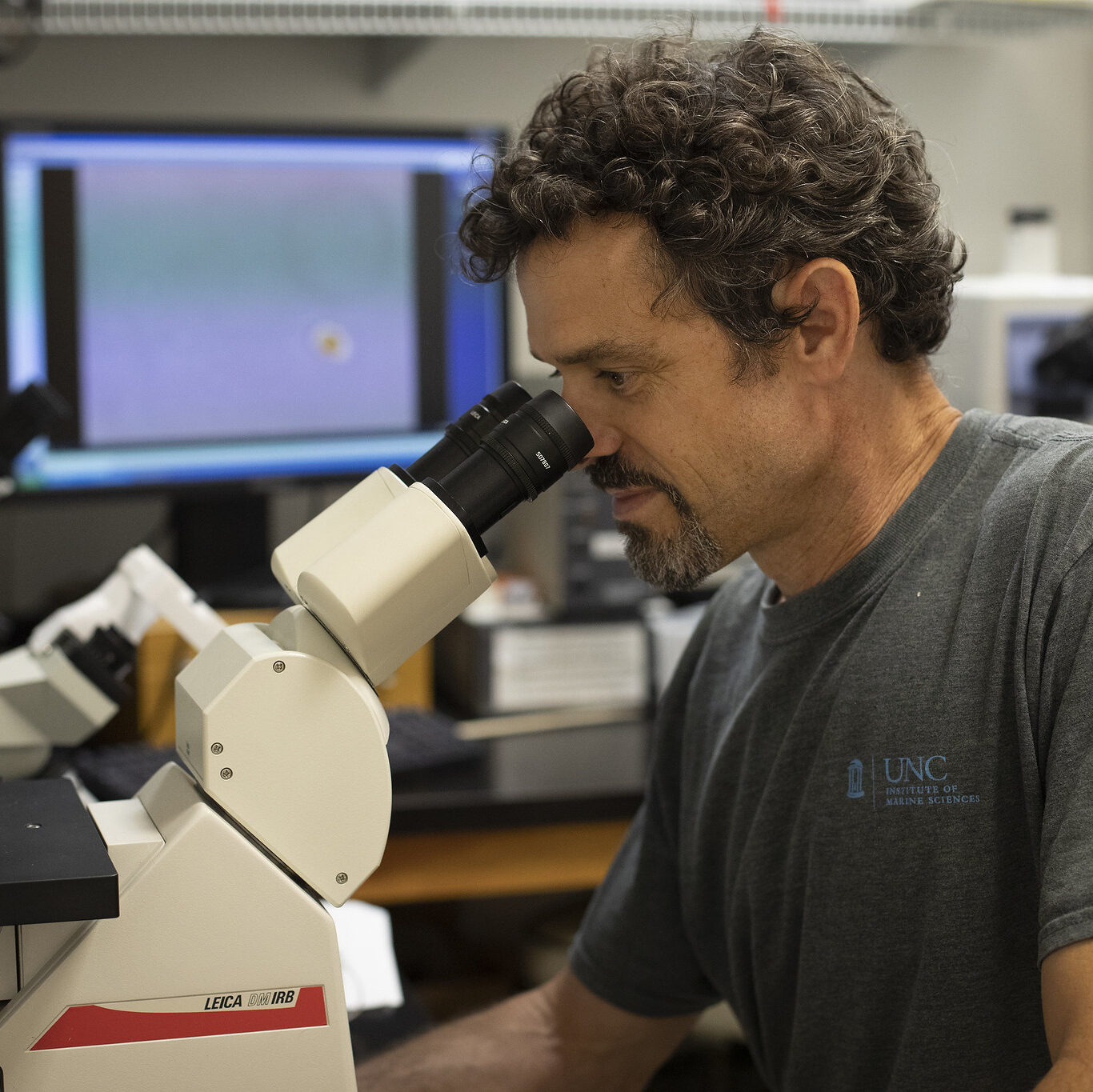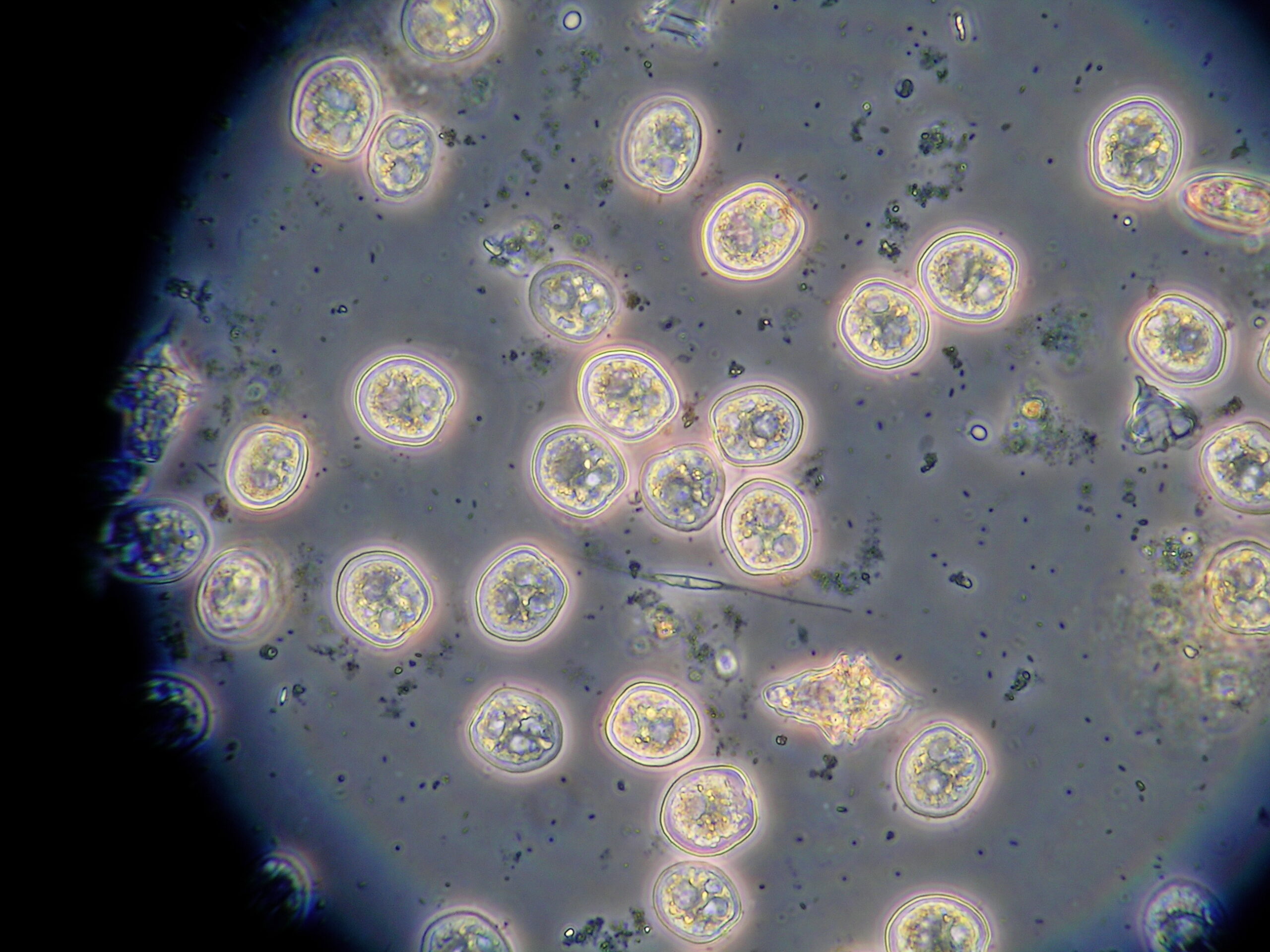Honors thesis student Prisca Lim receives Women Divers Hall of Fame scholarship

Prisca is studying the effects of different artificial reef materials on the microalgae that causes the often-deadly ciguaterra fish poisoning.
In the photo, Prisca is setting up a microcosm experiment to examine how different reef substrate materials affect the types of benthic microalgae that colonize these hard surfaces.
Prisca has been awarded a Women Divers Hall of Fame Marine Conservation Scholarship to study the potential association of artificial reefs and ciguaterra fish poisoning off North Carolina’s coast. Artificial reefs have been deployed worldwide in efforts to increase fishery yields and to combat the negative impacts of climate change – coral bleaching and habitat degradation. By providing a hard substrate, artificial materials enable invertebrate larvae and algae spores to settle and propagate on the surface. These organisms serve as primary producers and attract other fish or sessile invertebrates to the reef, thereby converting a human-made structure into a vibrant marine habitat. However, not all artificial reef materials are made equally; as these materials corrode, they can release substances that alter the chemical composition of the surrounding waters. As such, certain materials may be more favorable to invasive or toxic species. Specifically, Gambierdiscus spp. are toxic benthic dinoflagellates commonly found within coral reefs and macroalgae. These epiphytes produce ciguatoxins which accumulate within fish and result in ciguatera fish poisoning (CFP) when the contaminated fish is consumed by humans. It is likely that areas with higher abundance of Gambierdiscus spp. will also have a higher proportion of ciguateric fish. Prisca’s project is investigating the prevalence of Gambierdiscus spp. among artificial reefs of different materials, such as metal ships and concrete pipes, to determine whether the different materials affect the presence of Gambierdiscus spp. With this information, she hopes to predict which sites are more likely to produce ciguateric fish; information that could be used for fishing advisories. Information on the toxin promoting characteristics of materials currently deployed as artificial reefs will also aid in the design of safer future reefs.
Congratulations Prisca!

